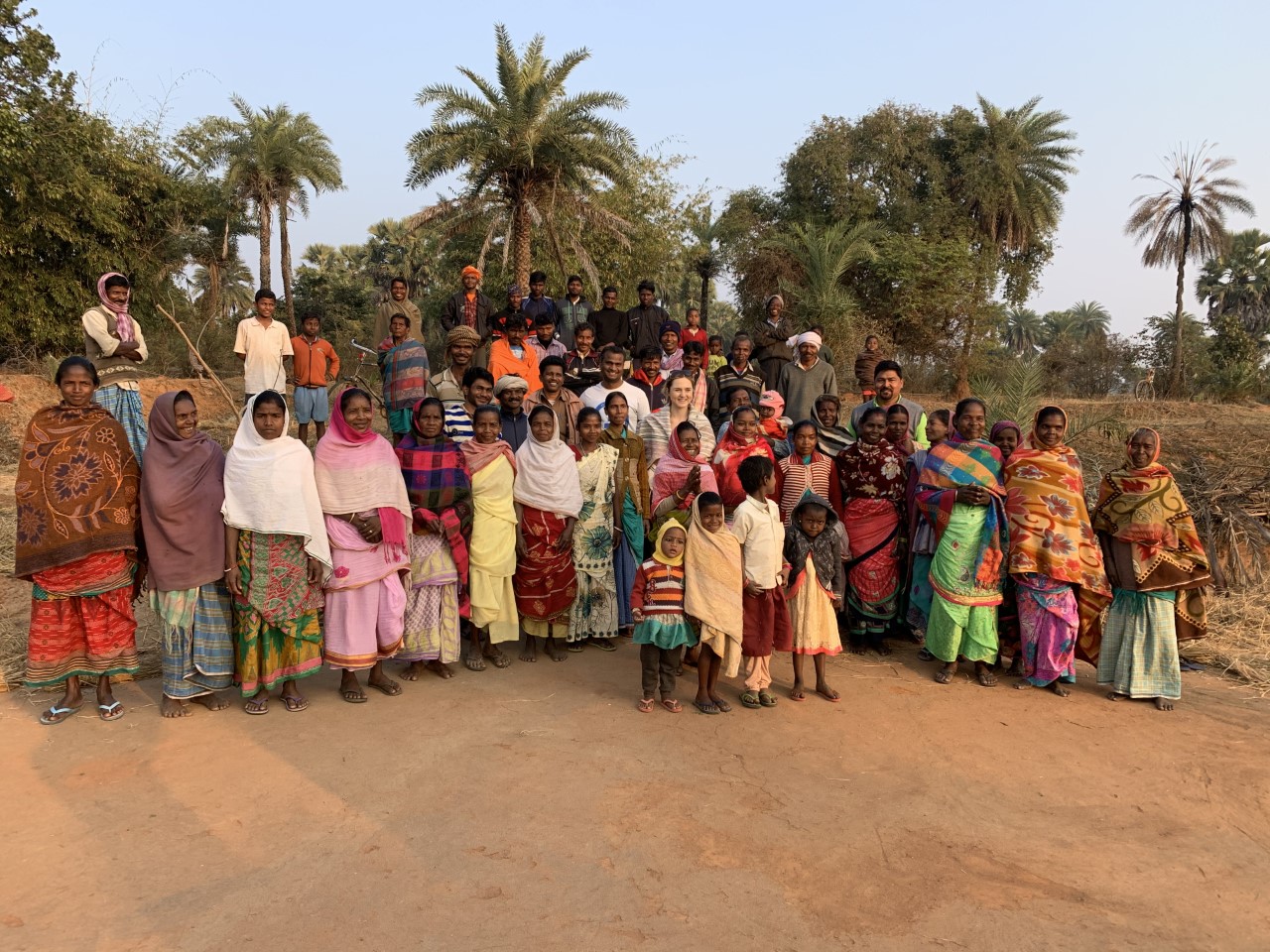Submitted by Sarah Bailey on Wed, 19/02/2020 - 10:01
Following the TIGR2ESS General Assembly in Hyderabad, Charlotte Milbank, a University of Cambridge PhD student, and Shuvajit Chakraborty, executive of TIGR2ESS collaborator PRADAN, travelled to Flagship Project 1 field sites in south Bihar. Here, Charlotte recounts their insights from a week with the Santhal Pargana and Pahariya tribal groups.
I am a first year PhD student with a well-defined but so far un-located research project. My research concerns so-called 'wild' or 'uncultivated' foods (including bush meat, insects, wild fruits and leafy vegetables) and their potential nutritional and environmental benefits for rural Indian communities.
My visit to Bihar with Professional Assistance for Development Action (PRADAN) was intended to expose me to a potential field site as I go about choosing the eventual place for my longer-term PhD fieldwork. After this week, and following conversations stemming from the General Assembly, I certainly feel spoilt for choice!
Why PRADAN?
Founded in 2005, PRADAN work with some of the poorest community groups across India, including south Bihar, helping communities (especially women) to develop their own skills and initiatives to drive the changes they need. PRADAN also partners with government and civil society groups to influence development policy in ways that align with real local values.
Bihar is home to relatively large populations of tribal groups, including the Santhal Pargana, and the Pahariyas. Since inception, PRADAN have established multiple field-sites in south Bihar working with these tribal communities on issues such as land access and rights, food security and migration. I was intrigued to learn more about these communities given their relative dependency on forest resources, including for food provision.
Visiting field sites with PRADAN allowed me to explore the complex relationships at play, aided by their in-depth knowledge of the place, local permissions and translation skills. Over the course of the week, I was able to visit three different sites, all familiar to PRADAN, and lived in by the Santhal Pargana and Pahariyas. During these visits I was able to pilot some of my proposed PhD methods.
Why research uncultivated foods?
Forest and tree-based systems are a significant source of micronutrient-rich foods for millions of people worldwide. Whilst TIGR2ESS’ primary objectives concern India’s cultivated food landscape, it is important that we understand the broader context of food practices that, for many Indian communities, also includes the use of uncultivated food resources gathered or caught in forests.
Whilst they are not staple dietary products, uncultivated foods may provide vital supplementary micronutrients and be of importance seasonally or during food crises. The degradation of forested environments in which uncultivated food practices thrive threatens their continued use, and, as a result, the food and nutrition security of the communities that use them. Supporting uncultivated forest foods could be an effective and contextually appropriate response to malnutrition, while ensuring prudent and sustainable use of natural resources.
Piloting my research methods
Shuvajit and I developed a semi-structured interview to allow us to explore peoples' relation to the forest, and the extent to which they draw upon forest resources for food across multiple seasons. We also worked with the communities to map their forest use on pre-drawn forest maps - charting the routes taken, the names given to each part of the forest, and the activities undertaken.
Bihar is a complex web
I was intrigued to learn about the numerous complex political, socio-economic and ecological changes that have and are unfolding in Bihar. The region has experienced environmental degradation, including (illegal) exploitation of forest resources and silting of water bodies. Recent increases in migration of the tribal people to the cities has altered traditional cultivation practices of the area, including leading them away from year-round cropping, and from traditional (often more nutritious) crop varieties.
The Public Distribution System (PDS), which provides food grain rations to poor households, is also thought to have contributed to the neglect of traditional grains as it provides a reliable and alternative food source. Given these and other factors, where and how we can place contemporary practices alongside 'wild' food consumption within this intricate web of relations was a question I continuously held in my mind.
This is just the beginning
Overall, the trip provided a rich experience, affirming my research but also forcing reassessment of my proposed methodology and terminology that we suspected could be problematic. Our colleagues at PRADAN were incredibly helpful. With their vast and rich knowledge of the Bihar region, they were able to aptly introduce me and my research to communities, expose me to new cuisines, and new languages. I plan to return to India for an extended period later this year. Meanwhile, my next steps are to finalise my research methods and protocols, and my schedule and logistics for fieldwork.
I can't wait to come back.

